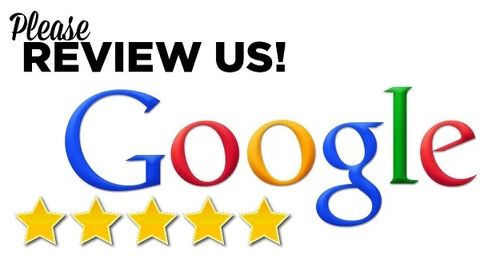Practical test
Introduction
You now have agreed with your driving instructor that you both feel confident to sit your driving test.
Before you take the test it’s important that you understand how the test works so that you do not get any unnecessary surprises on the day.
So your instructor will off already of taken you around quite a few test routes areas and give you a couple of mock driving tests with verbal instruction and sat nav (this might not be possible if you haven’t been with 1st choice from day one) and worked on your driving weaknesses.
Lesson aim
Your aim on driving lesson's leading up to your test is to be client-centred and drive independently with no help from your instructor (in other words he just sits there and says nothing), your instructor is there to work on your minor mistakes when you are going around test areas.
Lesson objectives
Your objective is to drive around any area with your driving instructor make make no (of very little) mistakes leading up to your driving test. If you are unable to do this you need to ask yourself "are your really ready to pass your practical test".
What do you need to bring on your driving test?
At the test centre
Documents needed
- Provisional licence
- Theory certificate
Waiting room
The examiner will come out of the office and call your name then introduced him or herself. They will then ask to see:-
- Your driving (provisional) licence
- Theory certificate (not all test centres ask for this but better safe than sorry)
Failing to produce your documents may result in you not taking your practical test.
Once your examiners has checked your provisional licence they will ask you to ensure your details are correct on there I pad, then tick a couple of boxer to confirm your address and email are correct (In covid -19 conditions your examiner may ask you to show them your provisional licence and sign your signature on a piece of paper that is handed to you).
Eye sight test
Once your documents have been checked you will be lead outside to read a number plate from a distance of 20metres (that is in the car park of the driving test centre) and once the eye sight test has been passed you will be asked to make your way to your tuition vehicle and wait for the examiner to do the vehicle safety checks.
Show me tell questions
Before you start your driving test you will be asked one tell me question and on your driving test you will be asked one show me question when you are driving on your driving (practical) test. Not being able to answer a show me or tell me question in a minor fault, so not knowing them both will accumulate two minors and you only can get 15 minors throughout the hole driving test.
Explanation on how the driving test works
Once you and your examiner are in your tuition vehicle your examiner will ask you to start the engine and explain clearly tell you to "FOLLOW THE ROAD AHEAD UNLESS I, ROAD MARKINGS OR SIGNS DICTATEOTHER WISE".
9 out of 10 times
As soon as you have left the carpark and turned left or right you are normally immediately asked to pull up on the left hand side of the road so ensure you have an adequate gap to emerge and if need be park up on the left if instructed too. You are asked to pull up on the left hand side of the road 5/6 on your practical test to demonstrate your parking skill on the left and you 6 point safety checks before driving on.
Examiners instruction
On your driving test your examiner will tell you in good time which way to go (just like a driving lesson). If you go the wrong way do not panic the examiner is testing your ability to drive not your ability to follow directions. It is better to go the wrong way correctly than to go the right way incorrectly.
If at any time you are unsure what the examiner requires do not hesitate to check what he or she wants, the examiner appreciates that you may be nervous and will be happy to repeat or clarify any instructions given. At certain points on the route the examiner may ask you to complete a set manoeuvre, as soon you are asked to move off the examiner will start to assess your driving ability noting any driving manoeuvre.
Here is a breakdown of how your test will go:-
1. Independent driving (following signs) or follow a sat nav
a. Ether a 20 minute independent drive (roughly half of the test you follow road directional signs). During this part of the test you have to drive following road signs and without directions from the driving examiner. Then the second half of the test the examiner will give you directional instruction (just like on a driving lesson).
b. Following directions from a sat nav (TomTom Start 52) for 20 minutes then the second half of the test the examiner will give you directional instruction (just like on a driving lesson).
Four out of five student will use a sat nav on the driving test, so ensure you are competent on following a sat nav on your driving lessons. Don't worry if you get confused the examiner will give you some guidance but remember you have don’t this on driving lessons already.
2. Pulling up on the left somewhere safe legal and convenient
On your driving test your examiner will ask you to pull up on the left hand side of the road at least 4/6 times. They are doing this to see how well you can park up on the left and to assess your M.S.M routine including blind spots when pulling off.
3. A set reverse manoeuvre
Reversing (you’ll be asked to do one of 4 possible reversing manoeuvres)
a. Parallel park
b. Driving into a bay and reversing out
c. Reverse into a parking bay and drive out
d. Pull up on the right-hand side of the road and reverse for 2/3 car lengths and re-join the traffic
*The reverse around a corner and turn-in-the-road manoeuvres is no longer in the driving test,
but you still will be taught them by your instructor*.
4. Hill and angle start
Every driving test candidate will be challenged with and hill start and a angle start from behind a parked vehicle.
5. Emergency stop
One in three candidates will get the emergency stop. This is showing your ability to stop under full control.
Location
On your driving test you will be assessed on numerous situations from driving on a dual carriage way, two lane roundabouts, town driving, 20 mph roads and even one way streets. So before you book you’re driving (practical) driving test make sure you are independent and ready to pass your test.
End de-brief
At the end of your driving practical test your examiner will ether give you some good news or bad news. If you are unfortunate and fail you can rebook your driving test for 10 days after the day you failed.
However on the success of you passing you have two options:-
Option 1
Your examiner with take your licence and send it to the DVSA and you will receive a full B licence within 3 weeks.
Option 2
You have 2 years to change your provisional licence to a full B licence (if you do not change it within 2 years you will loose your licence and will have to buy another provisional licence, pass a theory test and take another driving test) so option 1 is best unless you need to change your address your driving licence.
So good luck and we will leave you with looking at the test report form you will be tested on.
Here is what the driving test report looks like now, it is on an iPad so you no longer get a green failure or pass sheet the results are sent to your email that you booked your practical test on. The practical test form is called the DL25 and can be found on the internet with a break down of all sections. To make it easy I have a different wed page with all the information needed.

